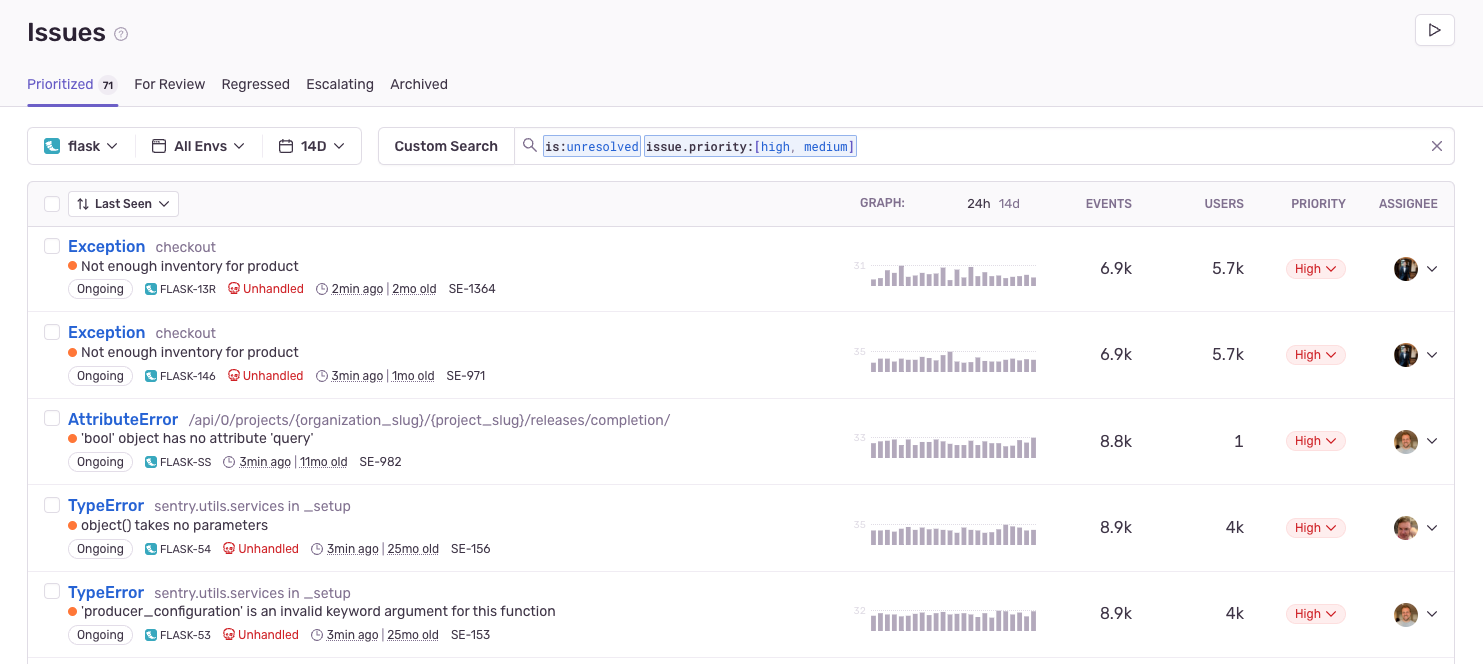Issue Priority - Early Adopters Release
We're excited to announce the rollout of issue priority, a new feature that helps development teams streamline their workflow by intelligently surfacing critical errors. This feature is currently available to Early Adopters.
What is Issue Priority?
Sentry collects a lot of information about your application, but not all of it needs to be addressed immediately. To help developers focus on issues that matter most, Sentry now assigns priority to the issue based on the event's log level (for error issues) or severity (for non-error issues like performance). For Python and Javascript projects, Sentry will also consider the error message, whether or not the error is handled, and historical actions taken on similar issues.
There are three discrete priority levels for issues in Sentry:
- High: Issues that are likely to be actionable and require immediate attention.
- Medium: Issues that are likely to be actionable and require attention in the near future.
- Low: Issues that don't require immediate attention.
Sentry also uses ongoing issue behavior to update priority over time. Issues experiencing a surge in occurrences (escalations) are automatically promoted in priority to ensure that nothing is missed.
Not satisfied with Sentry's assessment of priority? Users can manually assign priority values at any time.
A Less Cluttered Issue Stream
The issue stream now filters out low-priority issues by default, allowing your team to:
- Resolve critical errors faster: High-priority issues are highlighted in the stream, ensuring they get the immediate attention they deserve.
- Improve triage efficiency: Quickly reprioritize unimportant issues and remove them from the Prioritized view.
For more information, refer to our documentation on Issue Priority . Eager to get started? Enable Early Adopter features in your organization settings. If you have questions or feedback, please share them in our GitHub discussion.
